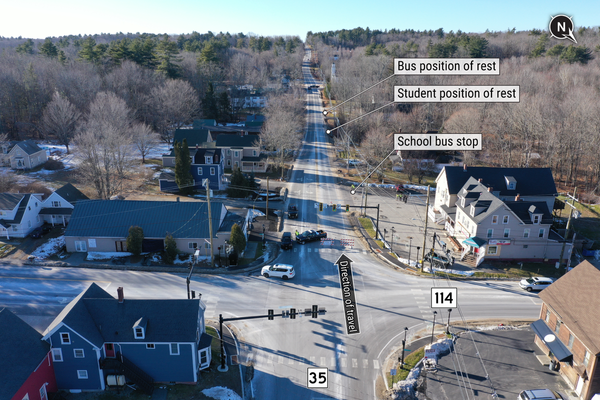
New Zealand has a small, successful, and growing education technology sector, which is gaining global traction
Education was always going to be a political hot button this election, especially after two pilots of NCEA literacy standards in 2022 found fewer than half the students passed writing tests.
Labour has announced it will introduce a Common Practice Model, mandating how to teach the curriculum. National’s policy would require primary and intermediate students to spend at least one hour on the basics every day. Act calls for standardised, hard assessment measures, but the Greens and Te Pāti Māori are less prescriptive when it comes to improving the poor performance in New Zealand classrooms.
READ MORE:
* AI chatbots will be a game-changer for educational assessment
* Can we rely on AI as a work-life coach?
* Artificial intelligence: Our dystopian future?
Being told what to teach is one thing, but the Post-Primary Teachers’ Association (PPTA) was aghast that teachers were also being told how to do their jobs. Acting president Chris Abercrombie said making laws about how teachers teach was “the thin edge of the wedge".
But academic-turned-entrepreneur Dr Ian Hunter says things have got so bad in our high schools that we have teachers who don’t know how to teach writing. Concerned about the lack of writing ability in his own students in the 1990s, Hunter began developing technology to address the decline.
Skills loss
Hunter says we’ve lost the composition skills approach taught in the 19th and 20th Centuries, covering matters of style, form and structure, alongside sentence and paragraph formation, as well as grammar. He says writing trends slowly moved to a focus on the outputs, the process and, in the 1980s, writing for the genre or delivery method for the message. For instance posters, narratives, essays, or advertisements would all have a different style. Hunter says the byword was that language was “caught not taught”, and teachers were reduced to facilitators. The outcome is deeply concerning.
“We now have three generations of New Zealand teachers who have never been taught how to teach writing. It’s the elephant in the room. It’s the inconvenient truth," he says. "We’re banging on the doors of New Zealand education. We now have the lowest scores since record keeping began in New Zealand. Even Unicef has come out and said basically a third of New Zealand children are illiterate by the age of 16.”
He’s referring to Unicef’s Report Card from 2020 which gave New Zealand “an F for failure” on wellbeing outcomes and that the estimated percentage of New Zealand children aged 15 who have basic proficiency in both reading and mathematics was 65 percent – slightly better than the UK (63 percent) and Australia (64 percent). On average 40 percent of children across all OECD and EU countries do not have basic reading and mathematics skills by 15.
The impact of these statistics is what really worries Hunter. “Educational capital” is something he believes we have a moral responsibility to get right.
“The lifetime earnings gap between someone who goes on to further education and someone who doesn’t is $1.7 million. That’s the difference between being a renter or a homeowner, between communities and whānau being enabled or disabled.”
Hunter believes in education for all, that teachers are the dynamic force for change, and that students can improve at their “most teachable moment”. And this year, after being named as finalist for the second year running, his company, Writer’s Toolbox, won the Most Innovative Hi-Tech Creative Technology Solution award at the New Zealand technology industry’s Hi-Tech Awards.
Artificial intelligence that teaches how
In 2012, Hunter established a team to use those core beliefs as the basis of an interactive online writing tool. The aim was to create an educational piece of artificial intelligence that would interact with a student and teach them to be a better writer. A key objective was to build inquiry-based learning and advances in neuroscience within the AI architecture.
As you write using the Writer's Toolbox, AI gives you immediate feedback through a dashboard. It is intended to motivate and help students learn new skills, plans, structures, and writing styles, notably the basics of form and composition. It supports all forms of writing across the curriculum, from essays to narratives to scientific reports.
“We don’t frame writing skills in dense grammatical jargon. That era of education left behind a wake of confusion, teachers outside the English faculty feeling disconnected, and little change to student writing performance," says Hunter. "Instead, Writer’s Toolbox talks sentence styles, paragraph types, style, structure, precision – the rules of composition. Established writing skills that support expression across all subject areas.”
The company now has offices in Australia and New Zealand, with more than 60 staff delivering its writing tool to about 650 schools globally. These are a combination of in-class coaching workshops combined with the educational software. Implementation starts with the teachers and students being assessed before Writer’s Toolbox is turned on for the school and training begins. It’s typically followed by a three-year planned programme of professional development.
Chris Abercrombie, from the Post-Primary Teachers’ Association, says Writer’s Toolbox certainly seems to be helping some students to acquire more writing skills, but there is no ‘one size fits all’ way to teach, as students are diverse and learn in a variety of ways.
“This software is one tool of many that are currently available to help students learn the skills they need. If it works for some students, and teachers, that is great. We do have concerns about the cost of tools such as this and whether the schools who could benefit the most from them can afford them.”
Can’t we just use ChatGPT?
“Do you want to go to the doctor who got their degree with ChatGPT? Ultimately one of the tenets of society is the trust we place that the professionals and the people we engage with know their stuff,” says Hunter.
He says the difference between Writer’s Toolbox and other tools is the role AI plays in teaching and learning. ChatGPT will generate an answer, and Grammarly will fix the technical errors, but the Writer’s Toolbox AI has been developed to teach people, not to tell them the answer.
And that brings us back to lifting the capability of teachers themselves. As well as the students it’s trying to reach, Writer’s Toolbox supports teachers in their professional development.
“It’s not their fault that we have not equipped our teachers with the skills," says Hunter. "When we come into a school, immediately it resonates with them because they’re hungry for the skills to equip their students. The teacher wants the tool, they’ve got the content knowledge, they want the skills to enable their students to succeed.”
Some Australian and New Zealand schools are providing positive feedback. Martyn Knapton, Principal at Whakatāne High School, says Writer’s Toolbox cuts out the middleman. He finds many teachers see themselves as subject matter experts.
“It gives teachers … a tool to learn literacy alongside the young person rather than positioning teachers to be the expert and to shift their pedagogy and practice," he says in a testimonial on the Writer's Toolbox website. "The uptake has been huge because every teacher’s looking for the magic bullet. [Writer’s Toolbox] gives teachers a framework that cuts straight to the practices and strategies that work to accelerate kids.”
In Writer's Toolbox's own four-year study of 71 Australian schools and 78,000 students using their programme, writing improvement rates were between two and ten times those in a Queensland control group.
First Australia then Asia
According to the Aotearoa EdTech Excellence report New Zealand has a small, successful, and growing EdTech sector that is gaining global traction. Specialist expertise covers interactive content, AI, virtual reality, educational games, research support, and administration. Our spending on education software was $174m in 2020, forecast by the industry to reach $320m by 2025.
Though Writer’s Toolbox is one of New Zealand Trade and Enterprise’s Focus 700 companies, Hunter doesn’t have grand plans to raise capital to expand. He’s proudly the owner of a private company, achieving growth and scale on the reinvestment of profits to date.
With schools in a growing number of Australian states adopting the technology and the programme operating in Malaysia and Dubai, Hunter is keen to move into the Southeast Asian market. That desire fits the potential the New Zealand Hi-Tech Trust chair sees for the emerging technology, noting at the awards “how many of our Kiwi companies really are making technology with purpose, that can scale internationally”.







